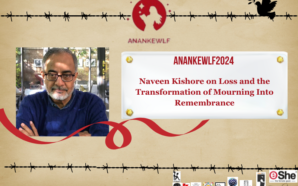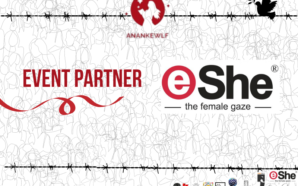As children, we are brought up to believe that the home is a safe haven we share with our parents and siblings, and perhaps even extended family and a few pets; it is a place where we are reared, cared for and protected so we have the opportunity to become the best version of ourselves.
Sadly, the home is also the place where, if the environment is less than wholesome, the most painful memories are formed and the most debilitating pain can be inflicted. Such is the scenario for all forms of domestic violence: parental, spousal or child abuse, wife battery, withholding food, money or other resources, emotional/psychological abuse, and others.
There is one kind of domestic abuse, which many of us refuse to speak of: incest.
Rape in itself is a tragedy, and is vastly underreported; it becomes a thousand times worse when it happens in the family.
We speak of it in hushed voices when discussing it happening to someone we know; and keep a stoic silence when we know it is happening in our own families. Such a taboo, this incest, that even neighbors and social workers find it difficult to report its incidence without the full cooperation of the victim, and without irrefutable evidence.
Fear surrounds the family circle and keeps the victim frozen and unable to scream even when an opportunity arises. The perpetrator keeps a tight hold psychologically, and perhaps even physically, on all family members if they are also aware of its incidence.
It happens between fathers and daughters/sons, among siblings or cousins, mothers and sons/daughters, etc. The victim can be an infant, a toddler, a boy or girl, an adolescent, or a grown-up. It happens in seemingly “normal” even upscale or wealthy families, among the poor, and families in between.
Sometimes the victim thinks that someday she/he will be free, unaware that incest is already taking insidious claim on the future – of what living will be like away from it all, if the victim gets away, physically, at all.
The victims of incest
Speaking of numbers, most of the statistics available would be very rough estimates since a limited number of incest victims can and do go out into the open, and not a lot are willing to expose themselves as the stigma attached to being sexually victimized within one’s family is not something to be taken lightly. Add to this the division exposure could create within the family, and the distrust and hatred that may follow.
In the article “Which country has the highest incest rate” (2012), it states that “Under the premise that those under the average age of consent is 14 worldwide; Western counseling agencies report that around 78 percent of women and children (males and females) coming from the most repressive country regimes such as Uzbekistan, Afghanistan, Turkmenistan, and Chechnya have experienced ongoing or initiative non-consensual incest.”
According to statistics on young victims of sexual assault on the US-based Rape, Abuse & Incest National Network (RAINN) website:
- 93 percent of juvenile sexual assault victims know their attacker
- 2 percent of attackers were family members
- 7 percent were acquaintances
- Only 7 percent of the perpetrators were strangers to the victim
- For 80 percent of juvenile victims, the perpetrator was a parent. 6 percent were other relatives. 4 percent were unmarried partners of a parent. 5 percent were “other” (from siblings to strangers)
These numbers only apply to the US where experts believe there are close to 60 million child sexual abuse survivors. Furthermore, other studies indicate that 46 percent of children who are raped are victimized by family members.
Majority of researches agree that females are more likely to be victims of incest, the same way that girls/women are at a higher risk of rape by a stranger or strangers. When it comes to reported cases of incest, girls outnumber boys by approximately ten to one. A study in 1991 involving state prisoners convicted for child rape or sexual assault revealed that three out of four of their victims were young girls.
According to data available on www.vday.org:
- In India, a government survey of 12,500 children and parents in 13 of 29 states found that over 53 percent of children between the ages of 5 and 18 have been sexually abused. Most surveyed said they knew the abuser (Ministry of Women and Child Welfare, United Press International, April 2007)
- In Barbados, a national survey of women and men aged 20 to 45 found that 33 percent of women and 2 per cent of men reported having been sexually abused during childhood (UNFPA, http://www.unfpa.org/intercenter/role4men/eliminat.htm )
- A review of victim reports in three states in the US in 1992 revealed that 46 percent of rape victims under age twelve had a family relationship with the perpetrator, and 20 percent were raped by their fathers (Bureau of Justice Statistics)
- One of every seven victims of sexual assault reported to law enforcement agencies were under age 6 (Bureau of Justice Statistics, National Incident-Based Reporting System, based on reports from law enforcement agencies of 12 States from 1991 through 1996)
- In a 1992 report from Canada, 17 percent of girls under the age of 16 had experienced incest (http://www.metrac.org/new/stat_sex.htm, J. Holmes and E. Silverman, 1992, We’re Here, Listen to Us: A Survey of Young Women in Canada)
- A random survey of 2,627 women and men conducted by the Los Angeles Times found that 27 percent of the women and 16 percent of the men had been incestuously abused as children (By Silence Betrayed, John Crewsdon, Little Brown, 1988).
- In Australia, based on a range of behaviors where children are used for someone’s sexual gratification, the prevalence rate is 1 in 3 women and 1 in 6 men (http://www.rwh.org.au/casa/info.cfm?doc_id=4004, Fergussen and Mullen, 1999)
- According to a 1989 study, 1 out of every 8 women in New Zealand has had an experience of incest (Otago Women‘s Health Study, 1989)
- According to New Zealand’s Rape Crisis Auckland 2003 statistics, 43 percent of cases of childhood sexual abuse were perpetrated by a family member (www.rapecrisis.org.nz)
- In Malaysia, there are approximately 300 cases of incest reported each year (Women’s Center for Change Panang)
- In Serbia’s Belgrade Incest Trauma Center statistics for 2005, the average duration of incest and sexual abuse of a minor was 5 years, 8 months. In 28 percent of the cases, the minor was abused by two or more offenders (www.incesttraumacentar.org.yu/Statistics.htm)
In another study conducted, this time involving victims of incest (93 women and nine men), “80 percent of the women and all of the men reported sexual problems in their adult life.” Victims of incest suffer from a variety of problems such as eating disorders, biochemically-induced amnesia, nightmares, feelings of guilt and shame, depression, low self-esteem, anxiety, etc., and may also exhibit self-destructive behavior including sexual promiscuity, drug use and suicide. Female victims, of course, always run the risk of unwanted pregnancy.
Silence perpetuates the crime
Just as misplaced feelings of shame keep a lot of rape victims silent, the taboo and social stigma attached to incestuous relationships and experiences serve as impediments to the exposure and arrest of perpetuators, thereby giving them more opportunities to abuse others in the process.
Considered one of the most neglected social problems across cultures, victims and family members are usually reluctant or slow to respond to interview invitations, or refuse to volunteer for research even when the guilty party is already dead or behind bars. Most of those who do participate do so under the condition of anonymity, sometimes in secret even from their closest relatives.
Incest is not something we openly discuss, even when it doesn’t directly involve us. Why?
Sexual molestation or rape happening among familiars, within one’s family, is a violent reminder of how unsafe the home can be. Home is supposed to be our safe haven from the difficulties we face every day outside of it. Incest destroys all notions of home, and it ruins, not just the victim but also the entire family.
But incest is wrong, even when the victim seems willing.
Should we keep silent, then?
About the writer
Claire Dangalan is a Filipina freelance feature writer (a.k.a. Lovely Claire Cachuela) and Features Editor ANANKE, based in Dubai. She is a consummate lover of the arts, especially literature. She taught Cultural Anthropology, Sociology, Humanities and Literature back in the Philippines. Her interests, aside from writing, include the environment, health and fitness, culinary arts, social issues, studies on world view, and “unprofessional photography.”
To connect or read more from Claire:
Blog: Faeriequeenbuknoy
Blog: Enthymememy
Facebook: Reduce your CO2 footprint
Twitter: Alice Red Queen
Twitter: Red CO2 Footprint











